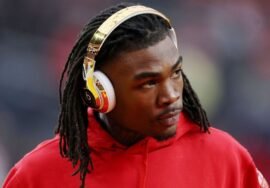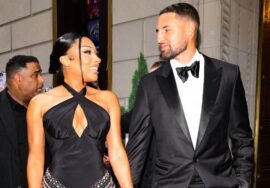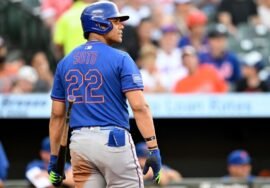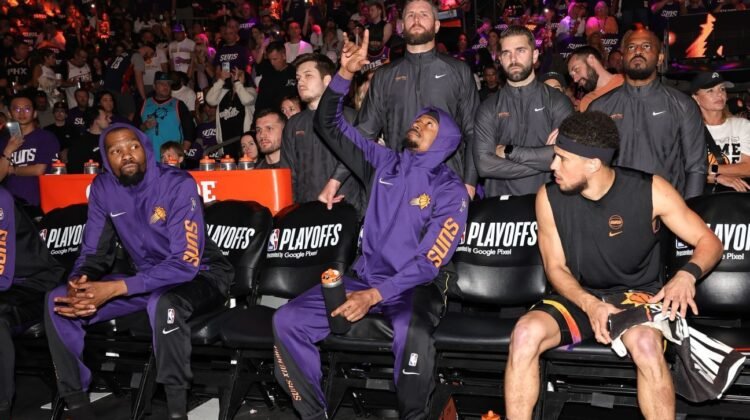
NBA free agency 2025 – Four reasons behind the Suns’ collapse
If the latest era of Phoenix Suns basketball mostly ended last month — when they agreed to trade Kevin Durant to the Houston Rockets — it reached its full conclusion Wednesday as the franchise bought out the remainder of Bradley Beal’s contract, just two seasons after acquiring him.
The Suns had high hopes in 2023. New team owner Mat Ishbia was confident and aggressive. He quickly engineered blockbuster trades for Durant and Beal, who had a combined 16 All-Star appearances at the time. The price for Beal’s contract didn’t even seem high, because he could dictate his destination due to a rare no-trade clause, and the Washington Wizards were more concerned with shedding his future salaries than receiving a big score in return.
But Durant, Beal and incumbent star Devin Booker never meshed, and the Suns won a grand total of one playoff series after they started their starry spending spree. That was a first-round victory over the LA Clippers in 2023, before Beal’s arrival. With Beal on the roster, Phoenix never won a playoff gameinstead falling in a first-round sweep to the Minnesota Timberwolves in 2024 and missing the playoffs in 2025.
And now that era is over, all too soon: Durant is a Rocket, and Beal will soon be a Clipper after reaching an agreement on a two-year deal following Wednesday’s buyout. Booker is once again the Suns’ only star, just as he was in 2020 before the franchise traded for Chris Paul and found a path to the 2021 NBA Finals.
On the occasion of the breakup, let’s remember this ill-fated period, which brought so much hope and bravado but so little tangible on-court success. Here are the four horsemen of the Suns’ recent apocalypse:
1. Mediocre results
The Suns’ first problem was availability; the second was mediocrity, even when all three stars were available. Due to various injuries — mostly to Beal, who hasn’t exceeded 53 games in a season since 2020-21 — the trio shared the floor for just 78 regular-season games and four playoff games across two seasons, going 45-37 in those contests. For reference, a 45-37 record would have placed ninth in the Western Conference last season and 11th the season before, meaning even at full strength, the Suns profiled like a back-end play-in team rather than a top-tier contender.
Overall, the three-star Suns were 85-79 in the regular season and 0-4 in the playoffs, giving them an 85-83 composite record. They were outscored by 55 points (plus-5 in the regular season, minus-60 in the playoffs); only the Heat were closer to neutral over the past two seasons.
In other words, the Suns were just about the NBA’s most average team with Booker, Durant and Beal all in the fold — and they were paying for a lot more than just average.
2. Superstar incompatibility
The NBA’s best superstar combos involve players who complement each other’s skill sets to produce a whole greater than the sum of their parts. Think about how Kevin Garnett protected the paint for Paul Pierce and Ray Allen or how Stephen Curry and Draymond Green continually elevate each other in the pick-and-roll.
The theory behind adding Beal was that he would supercharge the Suns’ offense to historic heights when playing with Booker and Durant but also help keep the team afloat when those stars sat. But neither effect proved true in reality, and Phoenix’s stars failed to complement each other because their skills overlapped too much, without offering anything new.
According to PBP Stats, when Booker and Durant played without Beal over the past two regular seasons, the Suns scored 120.5 points per 100 possessions. And when Beal joined that duo, the Suns’ offensive rating didn’t actually move at all, remaining at 120.5. Beal had no measurable offensive impact when sharing the court with Phoenix’s top duo, and the Suns’ defense was worse with him on the floor.
Meanwhile, lineups with Booker alone were better than lineups with Booker and Beal together, and lineups with Durant alone were better than lineups with Durant and Beal together. Lineups with just Beal, and neither Booker nor Durant, scored just 111.5 points per 100 possessions, equivalent to a bottom-10 offense.
(As an aside, this set of statistics is why I’m skeptical about Beal’s fit as a Norman Powell replacement for the Clippers. Can Beal be a difference-maker next to James Harden and Kawhi Leonard when he evidently wasn’t one next to Booker and Durant?)
Commensurate with his drop in usage rate from 32% across his last three seasons in Washington to 22% in Phoenix, Beal’s surface stats as a Sun actually look fine. He scored 17.6 points per game on solid efficiency, making 41% of his 3-pointers.
But those points proved to be empty calories, with nothing to boost the Suns’ standing in an increasingly difficult West. By that measure, he would have been a disappointing addition even if his contract hadn’t placed the Suns in the NBA’s most compromised financial position.
3. Exorbitant spending
With Ishbia’s eager support, the Suns led the league in total payroll over the previous two seasons. According to an analysis of Spotrac data, Phoenix spent $626 million between salaries and luxury tax payments. That was $51 million ahead of the second-place Golden State Warriors. And that doesn’t even factor in the nonfinancial penalties that Phoenix faced, due to the league’s new cap environment, as a result of spending past the second apron.
Even more remarkable is the lack of success all that money bought. Every other team in the top 11 in spending over the past two campaigns won at least one playoff game during that span — but not the Suns. Phoenix nearly doubled the spending of the next team that didn’t win a playoff game; the New Orleans Pelicans spent $336 million, or $290 million less than Phoenix.
Most of the league’s highest-spending teams got some bang for their buck, which makes sense, as more investment in a roster generally leads to more wins and losing teams aren’t incentivized to keep going deeper into the luxury tax. But on this graph, which shows spending over the prior two seasons by teams that won or didn’t win playoff games in that span, Phoenix stands out.
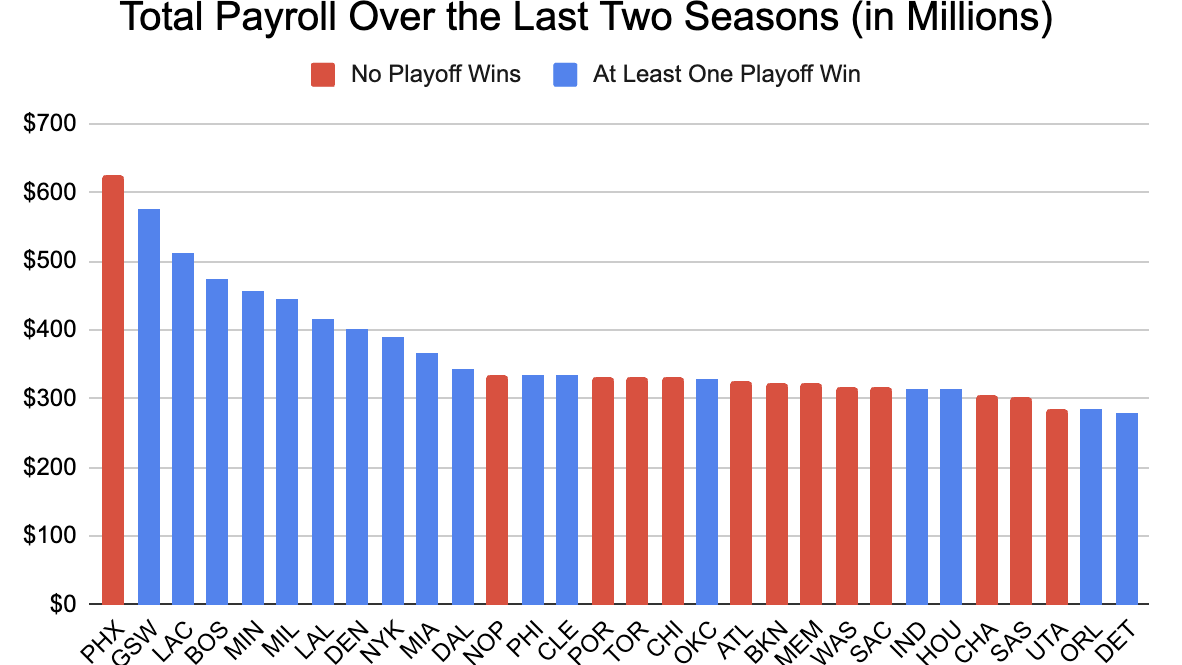
4. Disastrous trades
1:56
Why the Suns decided to lock up Devin Booker
Brian Windhorst discusses Devin Booker’s historic contract extension with the Suns.
To try to win with Booker, Durant and Beal, the Suns didn’t just go all-in from a financial perspective; they also went all-in from a strategic perspective, as they splurged with the most important currency in NBA trades — draft picks — in an effort to construct a superteam.
In total, to acquire Durant and Beal, the Suns traded five first-round picks, five swaps, Mikal Bridges, Cameron Johnson and Chris Paul. Those three players collectively fetched seven additional first-round picks plus a swap when their new teams traded them.
Add up all those assets and the Suns effectively valued Durant and Beal at the price of 12 first-round picks and six swaps. They don’t control any of their own first-round picks until 2032. (That math might be a tad inflated because it’s unlikely that, say, Bridges was worth five first-round picks on his own in 2023, though the New York Knicks were willing to pay that price a year later. The Wizards and THE Brooklyn Nets also took back large contracts when they traded Paul and Johnson, respectively, which could have contributed to their pick returns. Regardless, the overall cost for Durant and Beal is mind-boggling.)
“We do those things a 100 out of a 100 times, not 99 out of a 100, a 100 out of a 100,” Ishbia told ESPN’s Baxter Holmes last year. “And we still do ’em again. And I think [the] other 29 GMs would all do the exact same thing.”
When they moved on from Durant and Beal this summer, though, all the Suns got in return was one first-round pick (which they used on center Khaman Maluach at No. 10), Jalen Green, Dillon Brooks and a smidge of financial flexibility.
The result is a team with little present-day talent beyond Booker, almost no future assets and the wreckage of its recent past filling up the rearview mirror.
Just three years ago, the Suns had a 2-0 lead in the Finals, only two wins away from the first title in franchise history.
Now, they might have the worst long-term outlook in the league.


